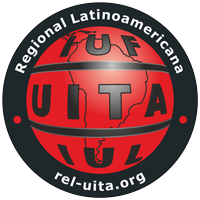GMOs and our daily bread
Argentines have been eating bread made with transgenic wheat flour for some time now. Thus far, they are the only ones. But in late August, the United States Department of Agriculture green-lighted the planting and marketing of genetically-modified wheat, raising concerns that the creature could expand to other territories.
Daniel Gatti
23 | 9 | 2024

Photo: Gerardo Iglesias
Although the safety of this “non-conventional” cereal has yet to be independently tested, in May 2022 the U.S. Food and Drug Administration (FDA) had already determined that it was safe for human consumption.
However, HB4 —as this variety of genetically-modified wheat was christened by Bioceres, the company that created it— is associated with glufosinate-ammonium, a toxic agrochemical that has been classified as extremely dangerous and which supposedly renders the wheat drought-tolerant.
Brazil and Paraguay are two other countries that have authorized the commercial production of HB4.
All Argentine agribusiness-related agencies, and a part of similarly related academia, welcomed the U.S. government’s decision.
“Argentine science continues to pave the way toward finding solutions to major global challenges,” Bioceres stated through a post on the social media platform X.
Similar positive remarks were made by executives of the Argentine subsidiary of the French multinational corporation Florimond Desprez, which is a partner of Bioceres in the company Trigal Genetics.
There is really nothing to celebrate. That is what dozens of social organizations and a different sector of academia had to say about this development. They argue that with this invention, even bread, a quintessential food staple, which has been part of our culture for thousands of years, is at risk of becoming harmful to human health.
Among others, Argentine agronomist Fernando Frank, a member of the organization Scientific Union Committed to Latin American Society and Nature (UCCSNAL), observed that it was ironic that Argentina, considered the “breadbasket of the world,” was offering such a product to the planet.
In this South American country, the only one in which genetically-modified wheat flour has been used to date (in breads, pasta, empanada dough, pastries), the “studies” presented to obtain planting and marketing approval were conducted by the company itself.
“These studies are not available to independent scientist or the population,” the newspaper Página 12 informed.
Neither has anyone been able to verify if HB4 is indeed “drought tolerant,” as its manufacturer and other agribusiness companies are announcing with great fanfare.
There is, instead, evidence —produced even by Argentina’s Ministry of Agriculture itself— of the higher productivity of conventional wheat over genetically-modified wheat, thus refuting another one of the arguments put forward by the industry in favor of HB4: its “yield”.
Not to mention the difference in effects on human health of one and the other. Zero or scarce in the case of conventional wheat grown under adequately safe conditions, and probably high in the case of genetically-modified wheat grown in adequately safe conditions, among other things because it is part of a “technological package” that includes toxic agrochemicals.
Página 12 recalled that the National Biotechnology Commission (Conabia), the “main authorizing institution” for these products in Argentina, “is completely dominated by the very same companies that sell the GMOs. This is both absurd and outrageous: the same people who file for authorization are the ones who vote in favor of granting that authorization”.
The newspaper also highlighted —almost in passing— how enormously cynical it was that “the very [agribusiness] model that is the leading driver of the climate crisis is now offering itself as part of the supposed solution to the disaster it caused”.
As early as 2020, over one thousand researchers from the National Science and Technology Council and thirty public universities in Argentina signed a manifesto denouncing not only the dangers of HB4, but also the way in which the cultivation of GMOs in general had been authorized by a handful of people behind the back of society as a whole.
The authorization of this crop, they wrote then, “is linked to an agribusiness model that has been proven to be environmentally and socially harmful, the main driver of biodiversity loss, not a solution to food problems, and a threat also to the health of our people as it affects food security and sovereignty”.
Argentine rural grassroots groups, family farmers, agro-ecological producers, and environmental organizations have been alerting for years about the consequences of expanding HB4 crops.
“Genetically-modified wheat is not designed to solve the hunger problem, but rather to boost agribusiness exports. We already went through this with genetically-modified soybean. What changed and how has it benefited Argentina’s social fabric?” these groups observed in a 2021 document issued under their “Not with Our Bread” campaign.
Foreseeing the possibility that the Frankenstein-like wheat could spread across the planet, similar movements on a regional scale, spanning all of Latin America and also Asia and Africa, issued their own alert.
They called for the intervention of the relevant special rapporteurs of the United Nations due to the food, health, and environmental risks posed by HB4.
“Planting and consumption of this crop will undermine human rights, such as the rights to life, to health, to an adequate diet and food sovereignty, to a pollution-free and balanced environment, and to access to land and territories, as well as the right to self-determination of local communities and peoples,” a common document published by these movements warns.
“This GMO has become an international problem, hence this joint action by organizations from three continents,” Leonardo Melgarejo, a member of UCCSNAL and Brazil’s Citizen Science Movement, explained.
“This wheat contaminates the basic food of the population and will certainly contribute to the concentration of land in the hands of a few, as well as affecting water resources, and the lives of the rural population and indigenous peoples,” he said.
And there is an additional risk: the contamination of conventional wheat by genetically-modified wheat.
Bioceres announced a year and a half ago that it was already mixing both types in 25 of its mills in Argentina.
“Genetically-modified and non-genetically-modified wheat cannot coexist due to the process of ‘genetic contamination’ that occurs during pollination and the toxic agrochemical residues that will remain in the flour obtained,” the multi-sector group “Paren de Fumigarnos Ya” (Stop Fumigating Us Now) observed.
According to this organization based in the Argentine province of Santa Fe and which is one of promoters of the “Not with Our Bread” campaign, “in impoverished societies that are culturally dependent on wheat and flour it is clearly a public health risk.” The association was formed over two decades ago with the aim of defending the populations that are victims of a model that began with the widespread cultivation of soybean.
Glufosinate-ammonium, the herbicide that is supposed to protect HB4 from the effects of droughts, is “much more toxic than glyphosate, with proven teratogenic, neurotoxic, and genotoxic effects,” the multi-sector group warns.
A study conducted in Argentina in 2022 by scientists from three national universities linked glufosinate-ammonium to birth abnormalities, genetic damage, and alterations in T4 hormone levels.
The study examined the interactions between this herbicide and glyphosate, two of the most widely used agrochemicals in Latin American fields, and found that, combined, something which is “easily” done, they “produce a new contaminant that can remain in the soil, water, and even, for example, in silo bag residues,” according to the agency Tierra Viva.
In comparative analyses, glufosinate-ammonium was found to be even more toxic than glyphosate or a mixture of the two, the study reported.
“We need to urgently put a stop to the continuous authorization of genetically-modified crops that are resistant to herbicides, such as glufosinate-ammonium, that lack bioethical assessments and multidisciplinary scientific endorsements,” the scientists noted in the study’s conclusions.
However, the governments of the region, regardless of their political affiliation, often do not take this view. Far from it.
In Argentina, the first GMOs date back to the time of the neoliberal government of Carlos Menem, but their expansion continued after his administration, to the point of becoming a “state policy.” The same can be said of other countries of the region, such as Brazil.
“Without a profound change, no measures taken will last long. It is not a question of replacing one harmful toxic agrochemical with another less harmful one. We need to stop producing based on a model that requires toxic agrochemicals and with a predatory profit-maximizing corporate logic,” the members of the Paren de Fumigarnos Ya network, which operates in the Argentine riverside area that is the “homeland” of genetically-modified wheat, said.
